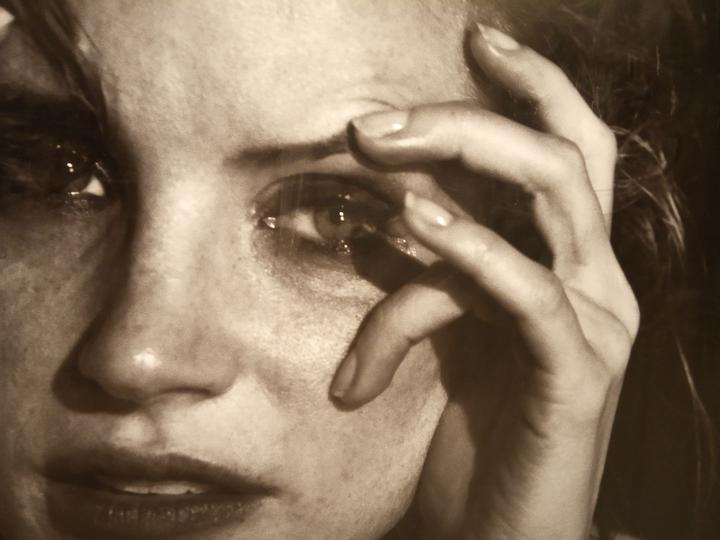Peter Lindbergh, the photographer of souls
Today I visited Peter Lindbergh's "Untold Stories" exhibition for the first time, which will remain in A Coruña until February 28, 2022. The truth is, I had very high expectations in relation to this exhibition that after having previously been in such countries like Italy or Germany, where he received a very good reception, ends up in A Coruña. I have to say that I did not know Lindbergh's photography, however, when leaving the exhibition one has the feeling of having reunited with that old friend whom you have not seen for a long time. You dare say you've been to Peter's show. Peter you say, as if you went to school together or lived in the same neighborhood, but not only that, when you go out you assume that just by mentioning it everyone will know who you mean. Implicitly, you believe that the world should know about it. You have discovered the artist.
As soon as you arrive at the Battery Dock, and once inside the port containers you find yourself trapped by a different atmosphere. You enter a huge room, in which there is just enough light to see the exhibition guide brochures that the hostesses kindly offer you. This is not disturbing at all but rather the opposite, it is a staging that arouses curiosity in the visitor and prompts him to visit the next room, wondering what he will find. In the next room, the first thing that catches your attention are the huge screens that surround the room. In a totally immersive experience, we listen to Peter himself talk about his photography, about what he intended when he portrayed people through his lens.
In the middle of the room is a bench that you can sit on to watch as Lindbergh seems to break that fourth wall and address the surprised viewer. The testimonies of the photographed models give force to the words of a Lindbergh, close and transparent. I was especially struck by a statement in which Lindbergh assures that if you photograph a person right now and take the same photograph an hour later, Although the environmental conditions are maintained, the photograph will not be the same. For Lindbergh, this fact finds its explanation in that the person is no longer the same. It is one of those affirmations in which you inevitably keep thinking, and it is that, as Heraclitus assured: “No one bathes twice in the same river”. Leaving there you access the first part of the exhibition, in which a series of Lindbergh photographs completely cover the walls. These photographs are not framed and occupy the entire room.

If Lindbergh's works have anything in common, it is that he manages to make the viewer fully or partially see the story hidden behind the photo from a face. The force of the gaze and the expression on the faces of the protagonists of the photographs are very relevant when recounting these testimonies. Somehow, Lindbergh, letting glimpse the story of the person he photographs, manages to make the viewer participate in everything he observes through his lens.
It is extremely difficult to get a person not to pose for a photo, to get him out of that learned role and get him to show what he curiously intends to hide. The rest of the photographs show the reality of women, whose fame or anonymity lacks relevance, since attention is captured by the story because of what the context or the face tells. Lindbergh dispenses with color except in one food photograph, in which colors lend vividness and exuberance to the dishes on display, and the series of photos he took of a man on death row. The latter is accompanied by a text in English in which Lindbergh himself shows his concern for the enormous implications of such a delicate and controversial issue as the death penalty. The photographs are impressive. In each of them, the viewer seems to appreciate different things on the inmate's face, from regret to pride, which makes it extremely difficult to know the true feelings of a person who knows he is going to die. Lindbergh brings to the table an enormously complicated subject through photography.
When leaving the ship, there are several containers in such a way that you can walk through them to see the photographs that are housed inside. The peculiarity of these photographs is that next to each one there is a text, in which the photographed dedicate a few words to Lindbergh and express themselves about the experience of being portrayed by the lens of the protagonist. Finally, there is an industrial-looking studio where you can have a coffee or buy products such as mugs, books, sweatshirts or t-shirts related to the exhibition. The profits from the sale of this merchandising will go to the "Future Stories" project of the Faculty of Fine Arts of Pontevedra (University of Vigo), aimed at supporting young creators at the beginning of their artistic career. It is a real privilege to be able to enjoy this artistic jewel without having to travel thousands of kilometres. A firm commitment to culture. An experience to enjoy calmly, during which we must try not to let the pause give way to the immediate, so as not to remain on the surface of what we see and to be able to discover what, patiently, awaits us.
